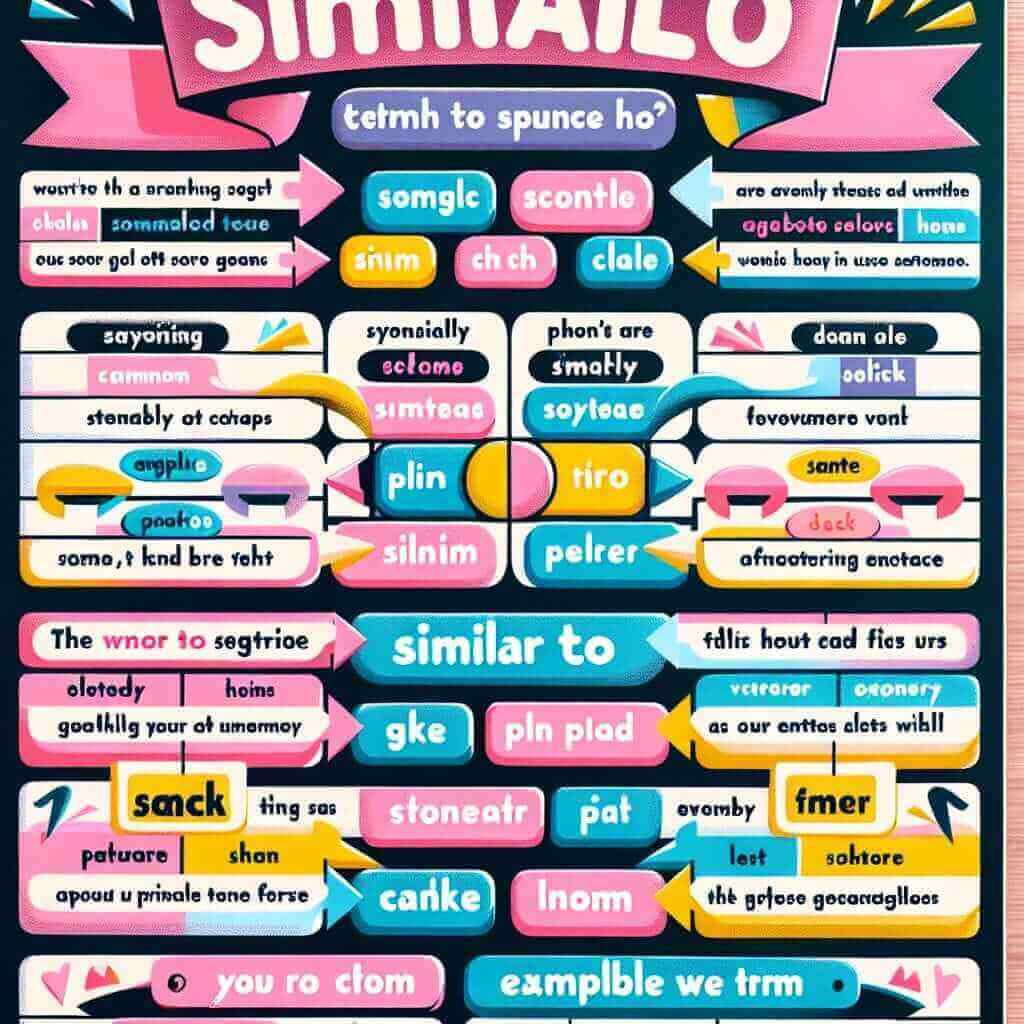“Similar to” is a phrase we often use in daily conversations to draw comparisons. But did you know that using it strategically in your IELTS writing can elevate your score? By understanding its nuances and exploring synonyms, you can express similarities more precisely and impress the examiner with your lexical resource. Let’s explore how “similar to” functions grammatically and discover its powerful potential in different sections of the IELTS writing test.
Here are a few examples of how “similar to” can be used in IELTS writing:
- Speaking Part 2: “The park near my house is similar to the one I visited in my childhood, with a serene pond and lush greenery.” (Here, “similar to” connects the two parks based on their shared features, showing the speaker’s ability to describe and compare.)
- Writing Task 1: “Some argue that the impact of social media on relationships is similar to that of television, leading to social isolation.” (This example uses “similar to” to draw a parallel between the impacts of two different technologies, showcasing the writer’s analytical skills.)
- Writing Task 2: “The architecture of the museum was similar to ancient Roman buildings, with towering columns and intricate carvings.” (This sentence demonstrates the effective use of “similar to” to highlight the architectural resemblance, adding depth to the description.)
In each of these examples, “similar to” acts as a bridge, highlighting the common ground between two different things or ideas. This ability to draw parallels is crucial for achieving a higher band score in the IELTS writing test.
Understanding “Similar to” and its Synonyms
Meaning and Usage
“Similar to” signifies a resemblance or likeness between two or more things, though not identical. It highlights shared characteristics while acknowledging differences.
Here’s a breakdown of “similar to” and its common synonyms:
| Phrase/Word | Meaning | Example |
|---|---|---|
| Similar to | Resembling in many respects | My new job is similar to my previous one. |
| Like | Having the same characteristics or qualities | Her voice is like silk. |
| Alike | Resembling each other in appearance, character, or quantity | The twins are so alike. |
| Comparable to | Similar enough to be compared | The cost of living in New York is comparable to that in London. |
| Analogous to | Showing a comparison between two similar things | The relationship between a teacher and student is analogous to that of a gardener and a plant. |
Using Synonyms Effectively
Choosing the right synonym can significantly impact your writing:
- Formal vs. Informal: “Analogous to” suits formal writing, while “like” is more informal.
- Degree of Similarity: “Alike” implies a stronger resemblance than “similar to.”
- Specificity: “Comparable to” is ideal when comparing specific aspects, like price or quality.

Applying “Similar to” and its Synonyms in IELTS Writing
Writing Task 1
When describing trends in graphs or charts, use “similar to” or its synonyms to compare data points:
- Example: “The sales figures for product A in 2020 were similar to those in 2019, indicating stable demand.”
Writing Task 2
Employ these phrases to strengthen your arguments by drawing comparisons:
- Example: “The benefits of regular exercise are comparable to those of a healthy diet, contributing to overall well-being.”
You can also use them to introduce opposing viewpoints:
- Example: “While some believe that technology isolates individuals, others argue that it fosters connections similar to those in traditional communities.”
Achieving a Higher Band Score
Using a range of vocabulary demonstrates your command of the English language, a key factor in achieving a high band score.
Here’s how to maximize your score:
- Avoid Repetition: Don’t overuse “similar to.” Employ synonyms to maintain reader interest.
- Context is Key: Choose the synonym that best fits the context and conveys the intended meaning accurately.
- Show, Don’t Tell: Instead of simply stating similarity, illustrate it with examples: “The new policy, much like its predecessor, focuses on environmental protection.”
Common Errors and How to Avoid Them
- Incorrect Grammar: Ensure subject-verb agreement when using comparative phrases.
- Lack of Clarity: Clearly identify the elements being compared.
- Overuse: Using too many synonyms can make your writing sound forced. Aim for natural and clear expression.
Conclusion
Mastering the use of “similar to” and its synonyms is a valuable tool for enriching your IELTS writing. By understanding their nuances and applying them strategically, you can express comparisons with greater precision, showcase your vocabulary, and ultimately boost your band score. Remember to practice using these phrases in various contexts to solidify your understanding and enhance your writing fluency.